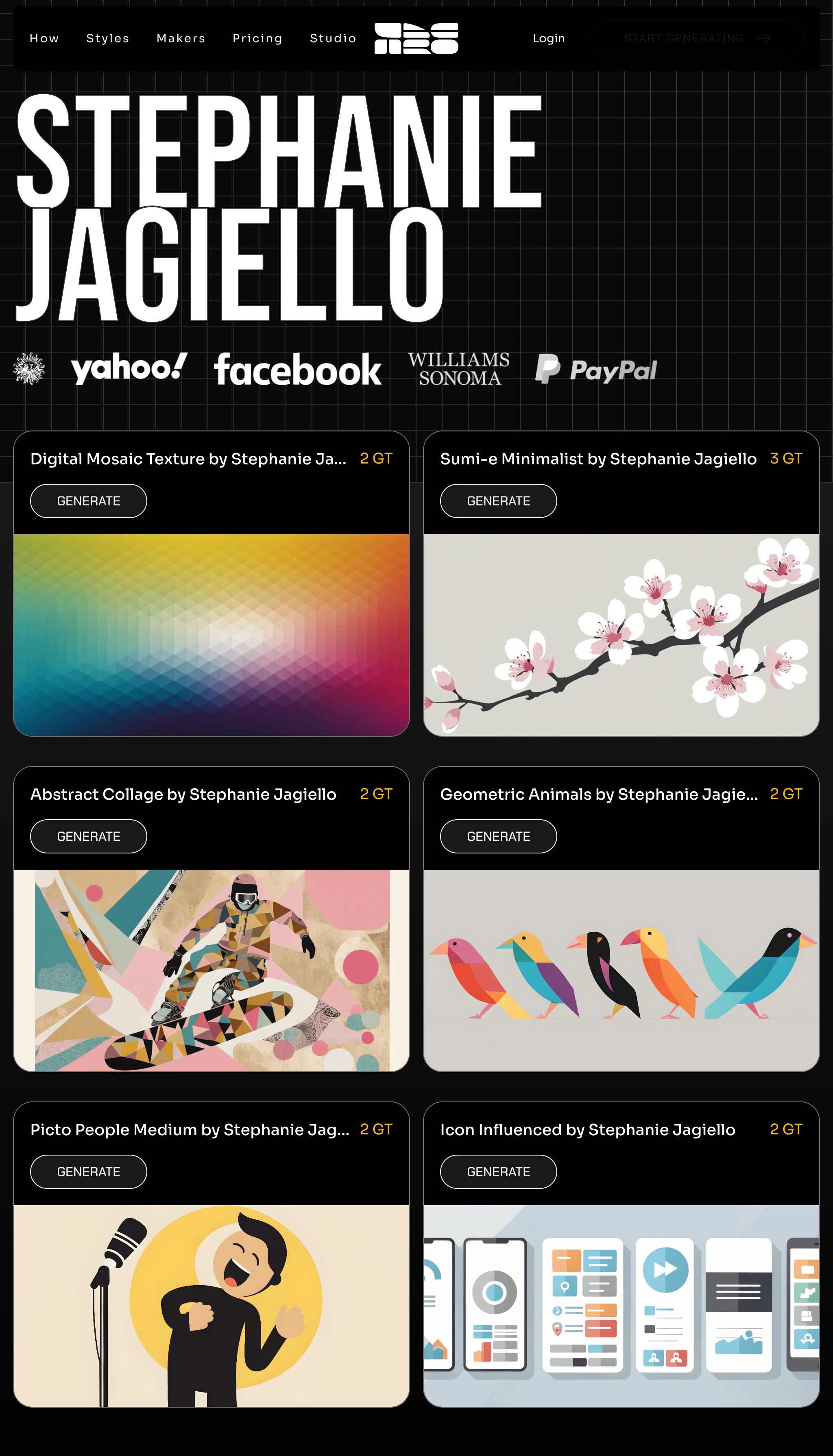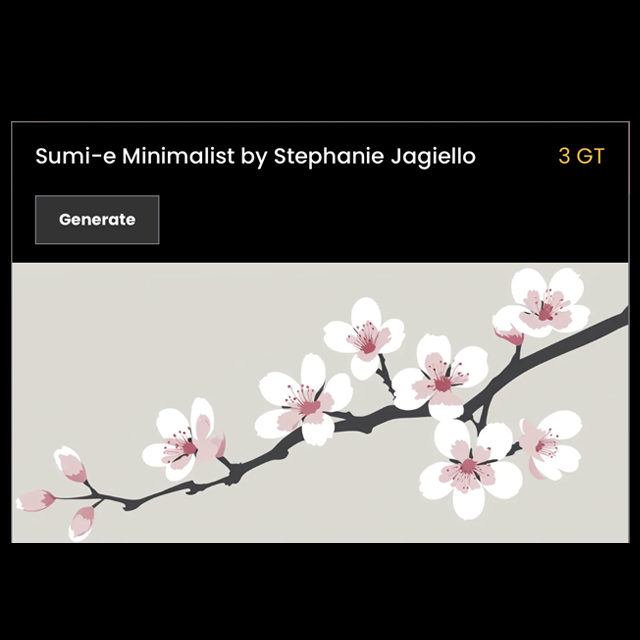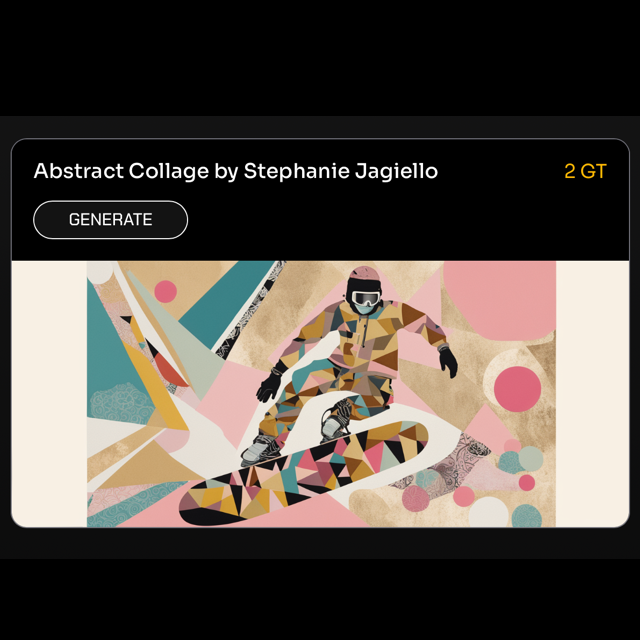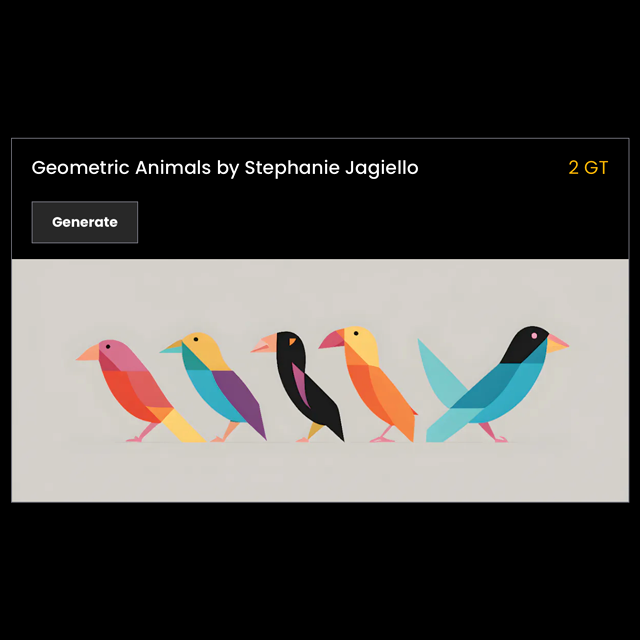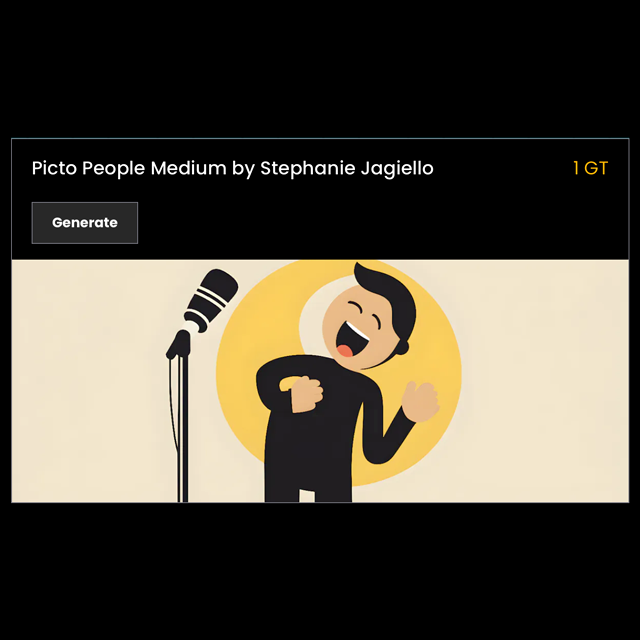Laetro
AI Style Representation Models + Guide for Artists
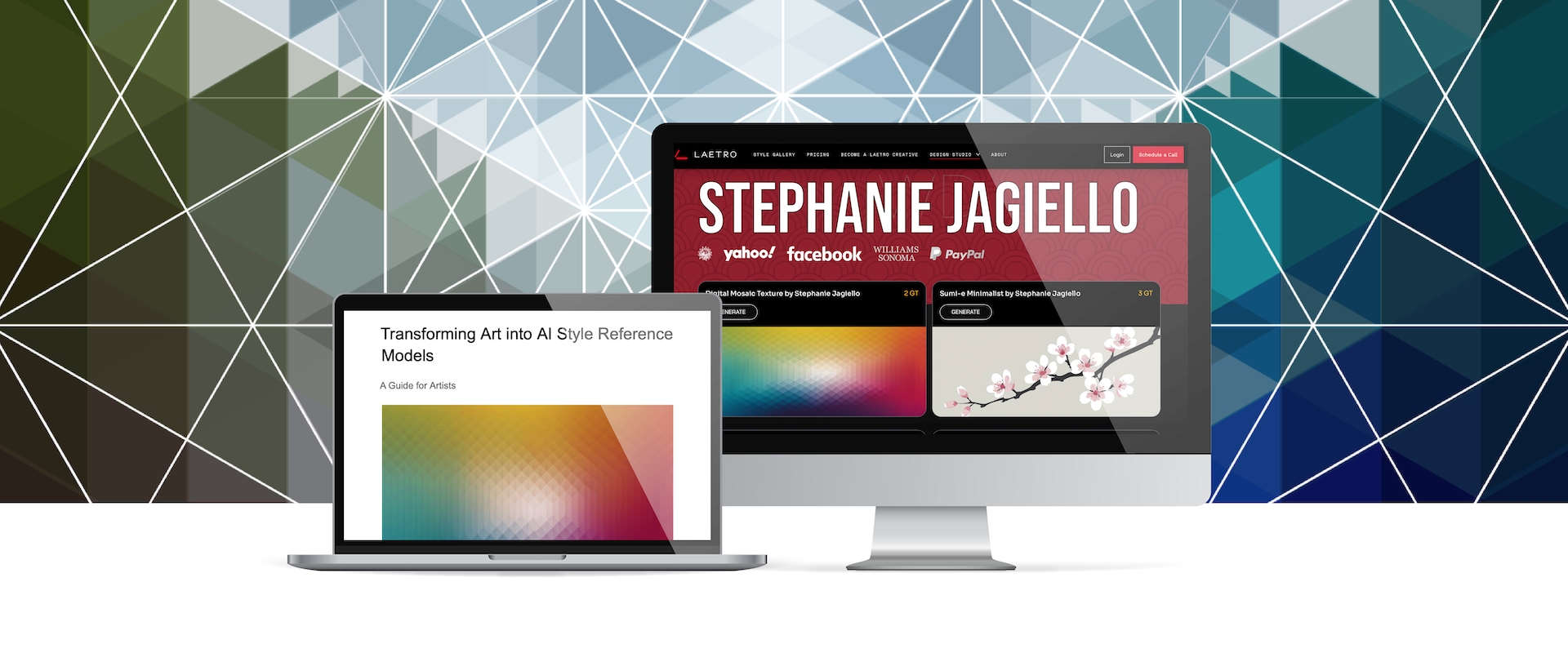
Overview
In this project, I was invited to be a founding member creative for Laetro CGS, an innovative AI image generation tool for Laetro artists and subscribers. This project focuses on leveraging my artistic expertise to create a series of AI style representation models derived from my own artwork.
My style models are now available on the Laetro platform, empowering subscribers to incorporate my artistic styles into their own digital creations.
My Role
My role as a founding member was early open-ended experimentation.
What I Did
Onboarding and Learning: I familiarized myself with the CGS tool, grasping its technical specifications and image requirements.
Research and Design Approach: Through research on related benchmarks, I informed my design strategy for crafting the AI style models.
Dataset Creation: I curated multiple collections of my artwork, categorized by distinct artistic styles, and processed them into training datasets for the AI.
I started with a sort of A/B test of opposites to learn the base model behaviors.
A. Simple Detail. I created simple detail dataset with vector style edges and uniform subject matter:
(A selection of my digital and vector artwork used as one data set to train a Minimalist Picto style representation model.)
B. Complex Detail. I also created a more complex detail dataset to find repeatable behaviors from the base model and trained set:
(A more detailed and varied selection of my digital and vector artwork used in a data set to train a style representation model.)
AI Collaboration: Through prompt techniques, imagery selection, and iteration, I collaborated with AI to train the image datasets and refine them into unique AI art style representation models.
I tested a wide range of prompts and training data sets. I tried to see if I could pull out consistent characters, character sheets, simple representation character sequences for movements like breakdancing, prompt sequences, training set amounts, for example.
I learned more about the base model, and what might be higher or lower value keywords, prompt structures, latent styling language.
I thought about the idea of it as tool used by others. I considered different use cases and audience types. I considered how to frame it in the style store for the audience to understand what it can do.
I created a working POV as a creator that took into account the intended audience, and the idea that this a new tool and therefore you need to guide more than if it were a familiar tool.
I chose to publish the styles with the full sample prompts used to create the sample images to make it easy for the person using it to start with a close style emulation that they could then change through prompt iteration.
This speaks to the need of traditional marketers who are looking for a certain high level of emulation of a style.
They might not be familiar with prompting, and therefore, I wanted to save them time getting the result they are after.
It's interesting because AI image generation systems have variety built in, and are heavily prompt influenced. As an artist, trying to emulate my artwork, I initially tried a lot of techniques to put the controls on every part of the image.
Ultimately, I see it as more design than art... a design exercise that is as creative as the artistic process.
The goal becomes to construct a tool other's will use, that emulates a style in a new way, that has roots in a particular style, but that's not exactly the same as the original, but can be an entirely new version of it based on the model capabilites.
It really is a collaboration.
(Images Created During Fine-tuning AI Style Representation Models.)
Style Model Development: I used latent style prompts and fine-tuning techniques achieve optimal artistic expression within the AI style models.
Images created with Abstract Collage Style Representation Model
Images created with Sumi-e Minimalist Style Representation Model
Knowledge Sharing: I also created a User Guide for Laetro CGS artists, sharing my learnings to empower them in utilizing the platform's creative potential.
Artist Guide (Exerpt Pages)
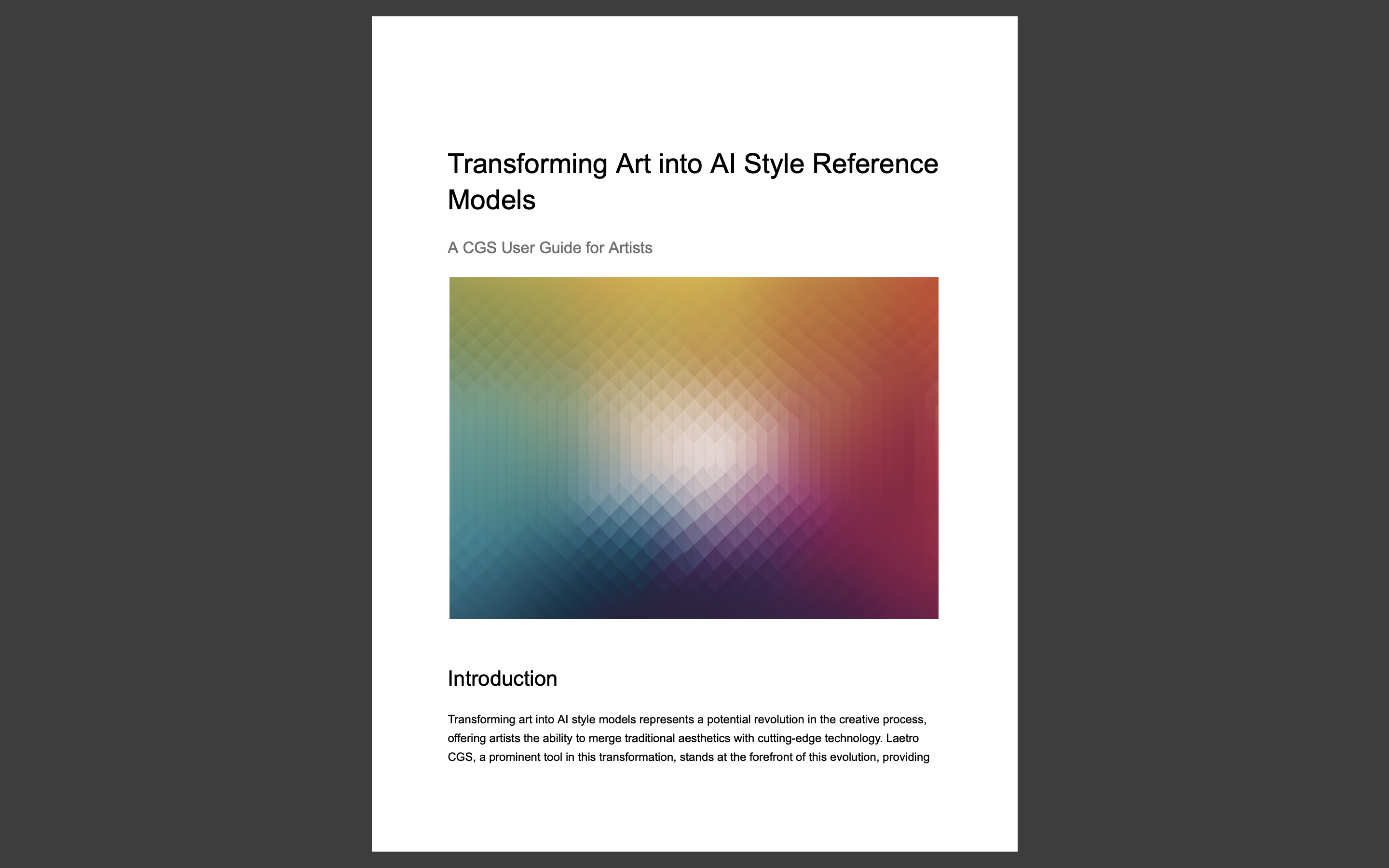
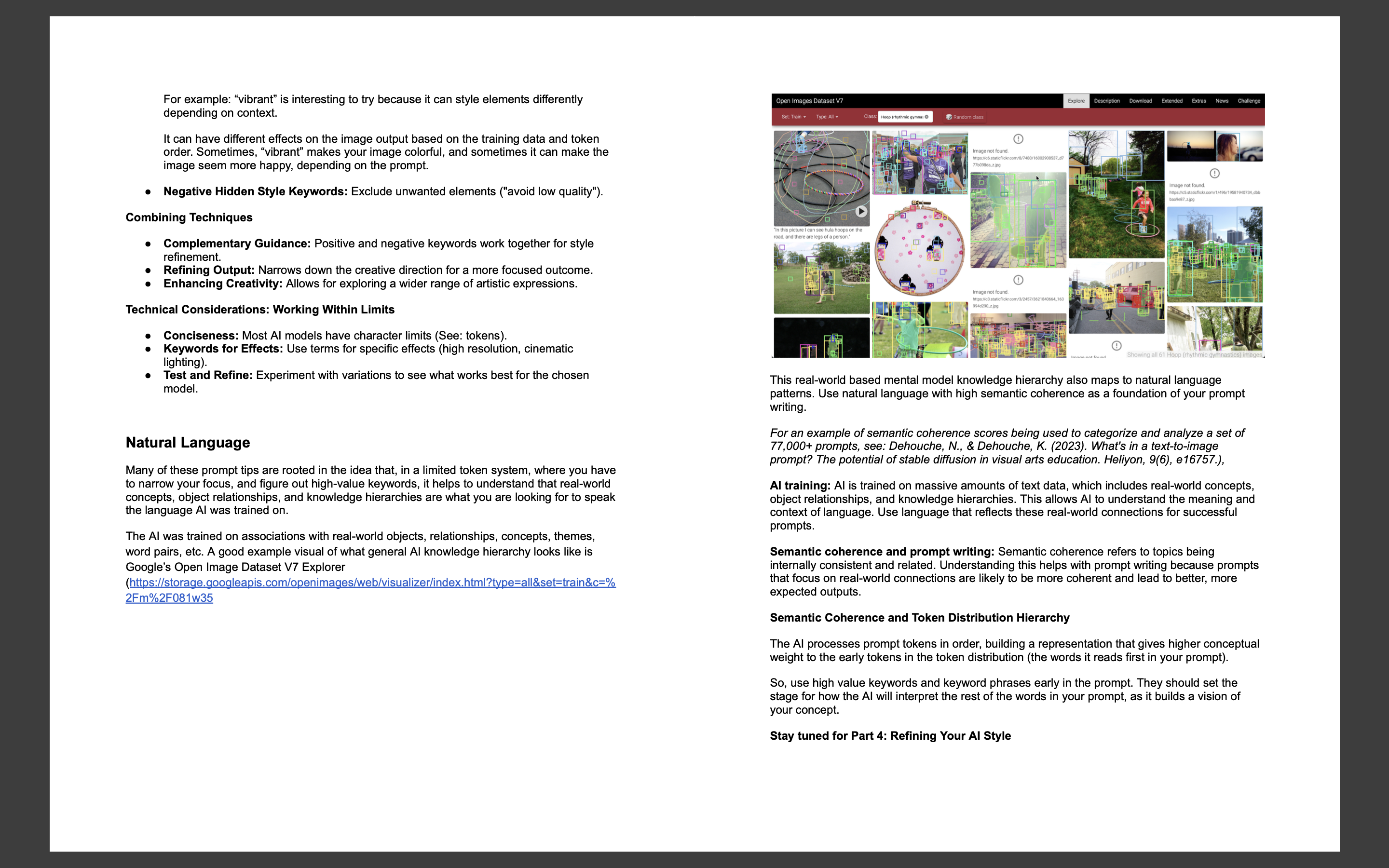
Project Impact
- Empowering Creativity: My AI style representation models empower Laetro subscribers to incorporate my artistic styles into their creative.
- Rewarding Innovation: The platform rewards artists like myself whenever their style models are used by companies on Laetro.
- Educational Contribution: My User Guide equips Laetro artists with the knowledge to leverage the CGS tool and explore its creative possibilities.
Key Takeaways
- Understanding AI Style Model Training: A nuanced grasp of AI style model training is the key to optimizing creative outcomes.
- Responsible AI Integration: Selecting AI tools with responsibly sourced data is essential for ethical and sustainable creative practices.
I'm continually exploring new possibilities with generative AI and design and sharing my knowledge.
